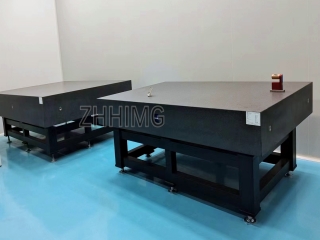In printed circuit board (PCB) manufacturing, precision and durability are critical. A key aspect of the process is the stamping of the PCB, and the material selection for the stamped parts can significantly impact production quality and efficiency. Two common materials used in this context are granite and steel, each with their own advantages and disadvantages.
Granite components are known for their exceptional stability and rigidity. The density of natural stone provides a solid foundation that minimizes vibration during the stamping process, thereby increasing accuracy and reducing wear on stamping tools. This stability is especially beneficial in high-speed applications, where even the slightest movement can cause misalignment and defects. In addition, granite is resistant to thermal expansion, ensuring consistent performance at different temperatures, which is critical in environments where heat generation is a concern.
Steel components, on the other hand, are preferred for their strength and durability. Steel parts are less likely to chip than granite, making them a reliable choice for high-volume production. Additionally, steel components can be easily machined and customized to meet specific requirements, providing design flexibility that granite cannot match. However, steel components are prone to rust and corrosion, which can be a significant disadvantage in humid or chemically corrosive environments.
When comparing the performance of granite and steel for PCB stamping applications, the final decision depends on the specific needs of the manufacturing process. For operations where precision and stability are critical, granite may be the best choice. Conversely, for those operations requiring durability and adaptability, steel may be more advantageous. Understanding the unique properties of each material is critical for manufacturers aiming to optimize their PCB production processes.
Post time: Jan-14-2025

